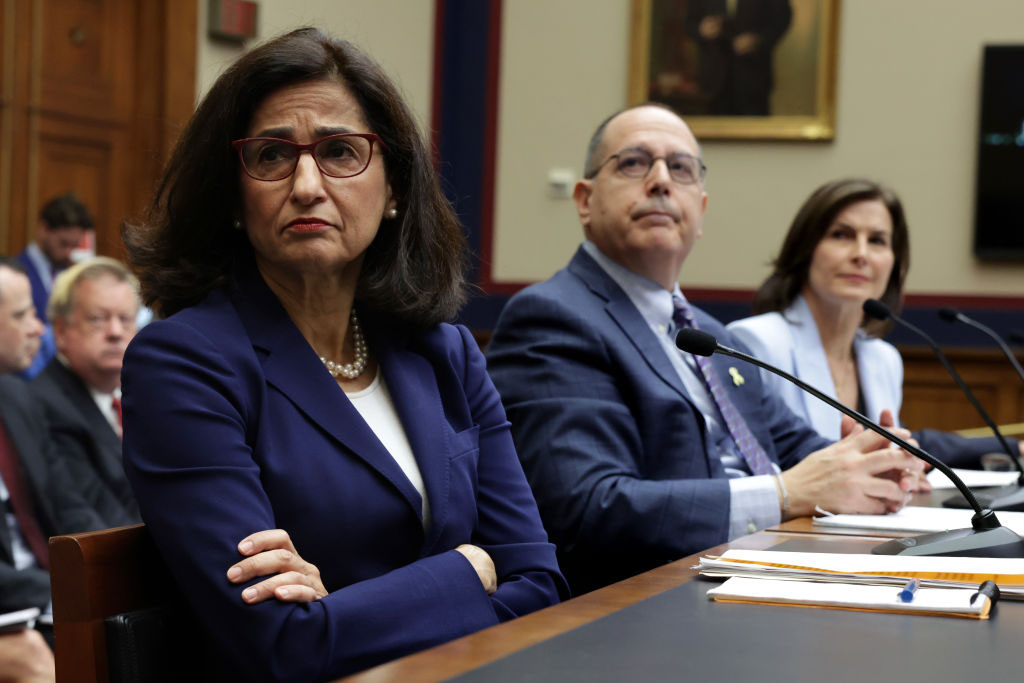Hershey Felder sits at a baby grand piano in the ornately furnished home he has rented near the Geffen Playhouse in Westwood. The 38-year-old Paris-based actor-pianist has temporarily moved here to perform his musical solo shows, “George Gershwin Alone” and “Monsieur Chopin,” at the Playhouse, “Gershwin” opens next Tuesday and “Chopin” on Aug. 9.
On this morning Felder looks more like Chopin than Gershwin, however, having grown his brown hair long and streaked it blond to resemble the romantic-era composer (he says he will wear a short hairpiece to portray Gershwin). Even so, Felder seems as comfortable dashing off sections of Gershwin’s jazzy “Rhapsody in Blue” as he is playing a Chopin polonaise on the yellowed keyboard of the baby grand.
During his musical plays, Felder impersonates the artists while telling their life stories, mixing humor with pathos (mimicking his flashy archrival Franz Liszt, for example). Both shows are part concert, part portrait and part interactive salon, he says. They also represent the first and second “movements” of a trilogy Felder calls his “Composer Sonata” (the third “movement,” which profiles Beethoven, will open at the Old Globe Theatre in San Diego next year).
“I want to take viewers through three different generations, to meet three of the greatest music-makers — actually musical inventors — who ever lived,” he says. “What connects these composers, thematically, is the price that each paid in order to create his work.”
Gershwin (born Jacob Gershowitz), pioneered the fusion of jazz and classical music, prompting the anti-Semitic industrialist Henry Ford to lambaste him for “contaminating” American culture. He composed close to 1,000 songs and successful Broadway shows, but felt underappreciated and often considered himself a failure. He also suffered debilitating headaches, which were misdiagnosed as hysteria, and died of a brain tumor at 38.
Chopin elevated piano music to new emotional heights while struggling with tuberculosis and a “melancholia” that was probably the result of bipolar disorder, Felder says. He was immersed in a turbulent and heartbreaking relationship with female novelist George Sand, who left him after 10 years when she finally tired of his violent hallucinations and mood swings. He died a couple of years later, at 39.
Chopin channeled his angst into his music — a phenomenon Felder demonstrates by playing part of the composer’s iconic, bell-like “Funeral March.” He explains that Chopin was inspired to write the piece by bells that tolled at the funeral of his beloved younger sister.
Felder made his concert debut at age 11 and identifies with these icons because he, too, sought solace in music after a devastating personal loss. When he was 7, his Hungarian immigrant mother was diagnosed with breast cancer. For much of the next six years, the young Hershey ran the family’s kosher Montreal household and supervised his mother’s care. When she died, not long after his bar mitzvah, he threw himself even more into his piano studies.
“Music was a place to run to,” he explains. “It became my identity. I felt that if I was going to be ‘weird,’ I was going to be weird because I could do something special as opposed to just the fact that my mother had died. My immersion in music also forced people, with all their different psychological theories about what to do with the widowed father and his two children, to simply leave me alone.”
By the time Felder was 18 he was touring the world as a concert pianist, with “Rhapsody in Blue” as his signature piece. He became a Steinway concert artist and an artist-in-residence at Harvard University, as well as something of a Renaissance man. Felder — who speaks five languages, including Yiddish and Hebrew — performed with Montreal’s Yiddish theater and traveled to Europe to conduct interviews for Steven Spielberg’s Survivors of the Shoah Visual History Foundation in 1995. In Los Angeles, he met his common-law wife, Kim Campbell, a former Canadian prime minister 21 years his senior, while visiting the Canadian consulate to renew his passport for a trip to Auschwitz. The two now make their home on the ground floor of a subdivided 1780s mansion in Paris, which overlooks the building where George Sand lived when she broke off her relationship with Chopin.
It was in Poland, in the middle 1990s, that Felder first devised the concept of a musical one-man show. One night in Krakow, a survivor told him about how he used to amuse the guards at Auschwitz by whistling Gershwin’s “Rhapsody in Blue.” The survivor felt that the piece had saved his life. Felder was so moved by the story that he turned it into a solo show, “SING!” which earned mostly good reviews at UCLA’s Freud Playhouse in 1998. But Gershwin’s heirs were concerned, according to Felder; they worried that the show associated their forbear with the Holocaust. Felder says a letter arrived, warning him to cease performing “Rhapsody” during his show because he had not secured the proper rights.
The pianist was mortified. He had performed “Rhapsody” more than 500 times, and he says he would never disparage its author. In fact, he intended “SING!” to laud “Rhapsody” for saving a life. Discreetly, he acquired the telephone number of one of the composer’s nephews, Leopold Godowsky III, and told his side of the story. Eventually the Gershwins allowed Felder unprecedented access to the composer’s personal papers and to create another show, “George Gershwin Alone,” for the commercial stage.
That show premiered at a tiny theater in Los Angeles in 1999 and went on to sell out theaters from Broadway to London’s West End. Some critics lauded Felder for creating what they perceived as a new kind of theatrical hybrid: the concert-play. Felder estimates that he has performed the show at least 3,000 times for more than 1.5 million people.
“George Gershwin Alone” presents the artist not just as an American composer, but as a Jewish American one. Melodies for songs such as “It Ain’t Necessarily So” draw upon synagogue music, Felder says; and Gershwin’s Russian immigrant father referred to “Rhapsody in Blue” as “Rhapsody for Jews.”






















 More news and opinions than at a Shabbat dinner, right in your inbox.
More news and opinions than at a Shabbat dinner, right in your inbox.